
Structural Shift in Orange Juice Production Pg 8


Structural Shift in Orange Juice Production Pg 8

PTania Walters Publisher tania@reviewmags.com
resident Donald Trump’s announcement of a ten percent tariff on all imports into the United States has triggered alarm among New Zealand exporters. As a small, trade-dependent nation, New Zealand sends the vast majority of its goods overseas, and any barrier to key markets is felt acutely. In 2024, the United States overtook Australia to become New Zealand’s secondlargest export destination, accounting for around $9 billion in exports, according to Stats NZ.
While New Zealand has prided itself on reducing trade barriers, eliminating most tariffs by the 2000s in favour of free trade agreements, the

country finds itself caught in the crossfire of a protectionist shift. What makes the situation more frustrating is the so-called "strange maths" behind the U.S. decision. Westpac chief economist Kelly Eckhold noted that New Zealand has been listed by the USA as imposing a 20 percent tariff on American goods, a figure that is difficult to explain. Eckhold speculated it might reflect the 15 percent GST combined with minimal WTO-aligned tariffs on specific products.
Supporters of tariffs argue that they protect local industries, encourage domestic production, and give governments bargaining power in trade talks. Tariffs can also increase government revenue and promote greater economic independence. Those not in favour of tariffs say that they increase costs, disrupt supply chains, and make exports less competitive, though they agree that they may offer short-term
gains for some countries. None of this should come as a surprise. Back in 2017, the CIPS Risk Index conducted by Dun & Bradstreet economists warned that the international community was shifting away from its commitment to globalisation. At the time, risk levels relating to global supply chains had reached their highest point since 2013, driven by post-Brexit uncertainty, the results of the USA election and instability across the Middle East. The World Trade Organisation reported an average of twentytwo new trade-restrictive measures being introduced every month. Populist politics was already rising, and the warning signs were there. The current wave of protectionism is not new, it has simply been building in plain sight.
In fact, Donald Trump has been remarkably consistent on this issue. In an interview with Oprah Winfrey more than
forty years ago, he spoke with surprising clarity — perhaps more clearly than he does today — about his views on trade, tariffs, and America being taken advantage of by other countries. It is worth a watch, not only for how little his message has changed, but also for the context it gives to the current moment. New Zealand, which once relied on tariffs for government revenue as far back as the 1840s, has since embraced trade openness. But Trump's tariffs are a reminder that not all global players want to follow the same path.


8 12 20 32

PUBLISHER Tania Walters
GENERAL MANAGER Kieran Mitchell
BRAND MANAGER Sarah Mitchell
EDITOR-IN-CHIEF Caitlan Mitchell
EDITORIAL ASSOCIATES Jenelle Sequeira, Sam Francks
ADVERTISING SALES info@reviewmags.com
SENIOR DESIGNER Raymund Sarmiento
GRAPHIC DESIGNER Raymund Santos
Retail 6, Heards Bldg, 2 Ruskin St, Parnell, Auckland. PO Box 37140 Parnell, Auckland
Tel (09) 3040142 Email: edit@reviewmags.com

















The world of water is evolving faster than ever, and every challenge is unique.
We are a fluid-thinking team of engineers, scientists, project designers, and sustainability specialists, committed to protecting our most valuable resources. We deliver tailored flexibility with innovative agility across the ANZ-Pacific water sector.
Whether you’re a local municipality or a global manufacturer, think of us as your performance partner. Here to help you maximise project lifecycle value and drive sustainable change.
Our in-depth hydro expertise, world-leading technology, and carbon-neutral services enable us to achieve exactly this—together.
Discover what more fluid thinking can do for you | hydroflux.nz
WATER WASTEWATER RENEWABLE ENERGY HYDROGEN TRANSITION ENVIRONMENTAL PROTECTION

Lion NZ has announced the installation of one of the largest rooftop solar arrays in the country at New Zealand’s largest brewery.
Being one of the largest rooftop solar arrays in the country, the 2,424 panels covering an area of around 5,400m2 will be visible from flights into and out of nearby Auckland Airport.
At 1.21 megawatts, solar energy is estimated to provide 14.4 percent of the brewery’s electricity needs per year –equivalent to approximately 228 average households.
Lion NZ Managing Director Craig Baldie said increasing the use of renewable electricity supports Lion’s ongoing commitment to decarbonise its business.
“We are a net carbon zero certified company committed to the ongoing decarbonisation of our business. Brewing is an energy-intensive process,” said Baldie.
Read more here

Biosecurity Minister Andrew Hoggard said the Government’s work to strengthen New Zealand’s biosecurity protections has received wide public support.
The Ministry for Primary Industries recently completed a public consultation on proposed amendments to the Biosecurity Act. The submissions showed that people understood the importance of having and improving a strong biosecurity system.
“It is vital this legislation is fit for purpose to manage increasing pressures from trade, travel, online purchasing, and climate change,” said Hoggard.
Proposed amendments include higher fines for passengers bringing in undeclared high-risk goods, greater flexibility around importing requirements, and fairer cost-sharing for biosecurity responses.
Read more here

Ministry for Primary Industries (MPI) scientists are part of an international team developing a low-cost diagnostic tool that could significantly improve food crop production in developing countries.
The rapid test uses a combination of chemistries to identify plant disease. It will allow growers to remove unhealthy plants in the field early in the growing season, enabling them to increase crop production of important food sources such as maize.
The government has encouraged New Zealanders, particularly in rural areas, to share their views on proposed regulations to improve the management of farm plastic waste.
The proposed regulations would support a nationally consistent product stewardship scheme for agrichemicals, their containers, and farm plastics, helping farmers and growers reduce their environmental
impact while maintaining productivity.
"The proposal – an industryled initiative – would bring the existing Agrecovery and Plasback programmes into a single national recycling system, making services simpler and more accessible for all users of regulated farm plastics," said Environment Minister Penny Simmonds.
Read more here
MPI’s Plant Health and Environment Laboratory (PHEL) scientists are working with researchers at Northwestern University (NU) in Illinois to build the PlantdX2.0 tool, which has shown positive results in field trials in New Zealand and Kenya.
Read more here






AUSTRALIA | As artificial intelligence becomes more ingrained into working lives, questions of accountability loom large. Department of Business Law and Taxation lecturer Dr Estelle Wallingford's cutting-edge research explores who should be held responsible when AI causes harm.
Dr Estelle Wallingford has always had an interest
in technology. In secondary school, her teachers encouraged her to consider a career in engineering. Instead, she chose the legal profession - a decision that ultimately landed her at the intersection of two rapidly evolving fields: artificial intelligence (AI) and the law. As a practising lawyer, she gained exposure to the evolving role of AI in professional settings. Read more here
Fresh Carriers Co., Ltd (FCC) and Zespri carried out the first kiwifruit charter powered by lowemission fuel, with the vessel Kowhai docking at Nangang Port in Shanghai. The Kowhai is Zespri’s first charter shipment for the Greater China region for the 2025/26 season. It has continued Zespri and FCC's trial work, following a technical performance
trial undertaken last year. With biofuel not available in New Zealand, the vessel bunkered the biofuel in Hong Kong before sailing south to Tauranga, where it was loaded with 1.2 million trays, or around 5,400 tonnes, of Zespri SunGold Kiwifruit and 16 containers of Zespri RubyRed Kiwifruit for customers in Greater China.
Read more here





Pasteurisation
Sterilisation
Aseptic Filling
Direct Steam Injection
Evaporation
CIP Kitchens
Process Skids
Juice Crushing and Remelting
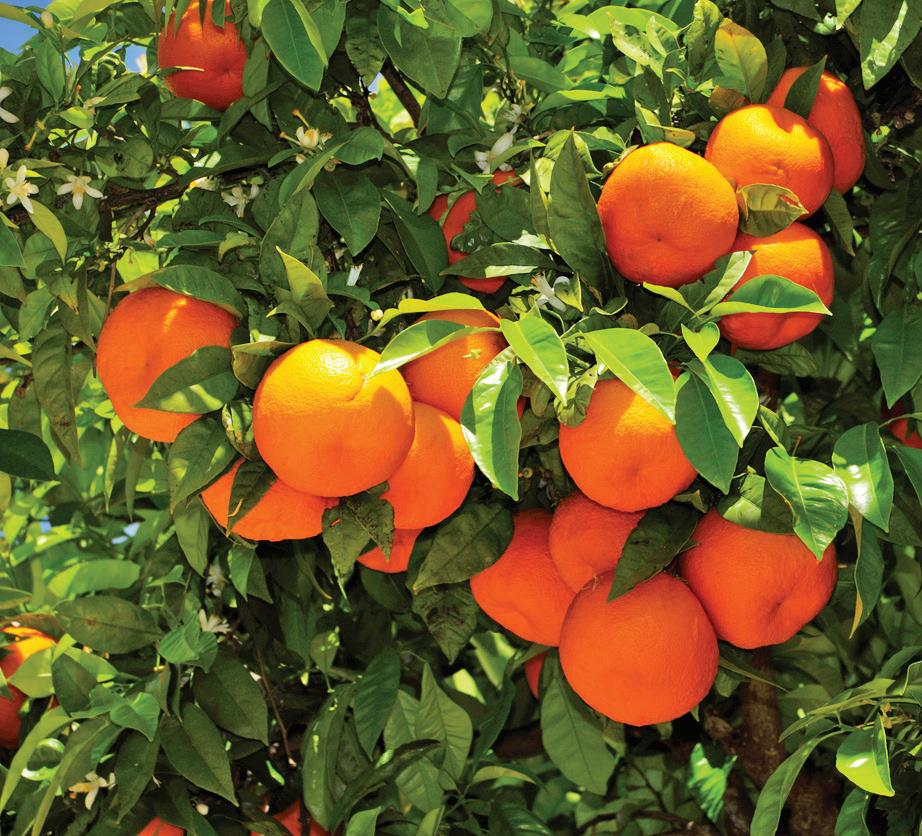
ARE WE
From climate change and disease, to declining production and uncertainties around tariffs and trade, the global orange juice sector is going through unprecedented upheaval, which will result in winners and losers for both growers and processors.



November 2024 was a key month for the world’s orange juice producers. Not only was Donald Trump re-elected as the President of the United States, but the World Citrus Organisation (WCO) published its first production forecast for the northern hemisphere, suggesting an 8.7 percent decrease in production for the 2024/25 season. In fact, the estimated 27.297 million tonnes of northern hemisphere production is almost 6 percent lower than the four-year average.
This worrying trend was confirmed by the United States Department of Agriculture (USDA) in January this year, who predicted that global orange production for the 2024/25 season is 45.2 million tonnes, down 662,000 tonnes on the previous year as ‘as higher production in Brazil is more than offset by lower crops in Egypt, Turkey, and the United States.’ Although a relatively small producer globally, the devastating floods seen in Valencia, Spain last autumn (which caused losses in the citrus sector valued at more than $200 million) could almost be a microcosm of the challenges facing the sector globally.
The big positive for juice producers is that not only is Brazil’s crop forecast at 13 million tonnes (an increase of 700,000 tonnes) this year, but also a larger proportion of the crop will be used for processing. On the other hand, US production is forecast at just 2.2 million tonnes, the lowest level in 88 years and a 10 percent
fall on 2023/24, most likely due to the devastating effect of Hurricane Milton in Florida, as well as longer-term issues like citrus greening.
Egyptian orange production is also forecast to fall this year by 12 percent to 3.7 million tonnes after years of steady increase, which was driven by the development of strong export markets by both private enterprise and the government, as well as increasing domestic consumption. The current decrease in production is due to unfavourable weather during flowering and fruit set, but despite this, the country is still the most important exporter of the fruit in the world.
While production in other countries such as South Africa, Mexico and China is set to remain fairly constant, Morocco and Australia are both up thanks to increased area, improved agronomy and favourable weather, helping to underline the global shift in production away from Brazil, the US and Mexico that has occurred in recent years. Further afield, analysts suggest that Argentina and Peru are also looking to increase exports to Europe.



Having said that, Brazil, Mexico and the United States still dominate the worldwide orange juice market and are forecast to produce more than 1.25 million tonnes between them this year, more than 80 percent of which is

Continued on page 9.
from Brazil, who will produce a million tonnes more juice this year due to higher fruit availability. As you would expect from low fruit production, US orange juice production is forecast to fall 28 percent to a record low of just 80,000 tonnes.
These low levels of production mean the industry is having to adapt. Although at the time of writing Frozen Orange Juice Futures prices had dropped below $400 for the first time in ten months, they are still trading at twice their value at the start of 2023.
Rabobank suggests that citrus greening will continue to have an effect on output in
key regions such as Brazil for the foreseeable future, while global juice consumption has also declined considerably, partly in response to higher retail prices – something that has particularly affected premium brands and not from concentrate (NFC) products. A shortage of stock can also make it harder to obtain the required Brix levels, and poor-quality juice means consumers question why they should pay a premium over value propositions.
The only benefit of global declines in consumption of around 17 percent last year is that it has helped to balance demand with reduced stocks, as 2024/25 ended with a small surplus of around 1.2 million tonnes.
In many markets, orange juice is already subject to import duties or tariffs, and
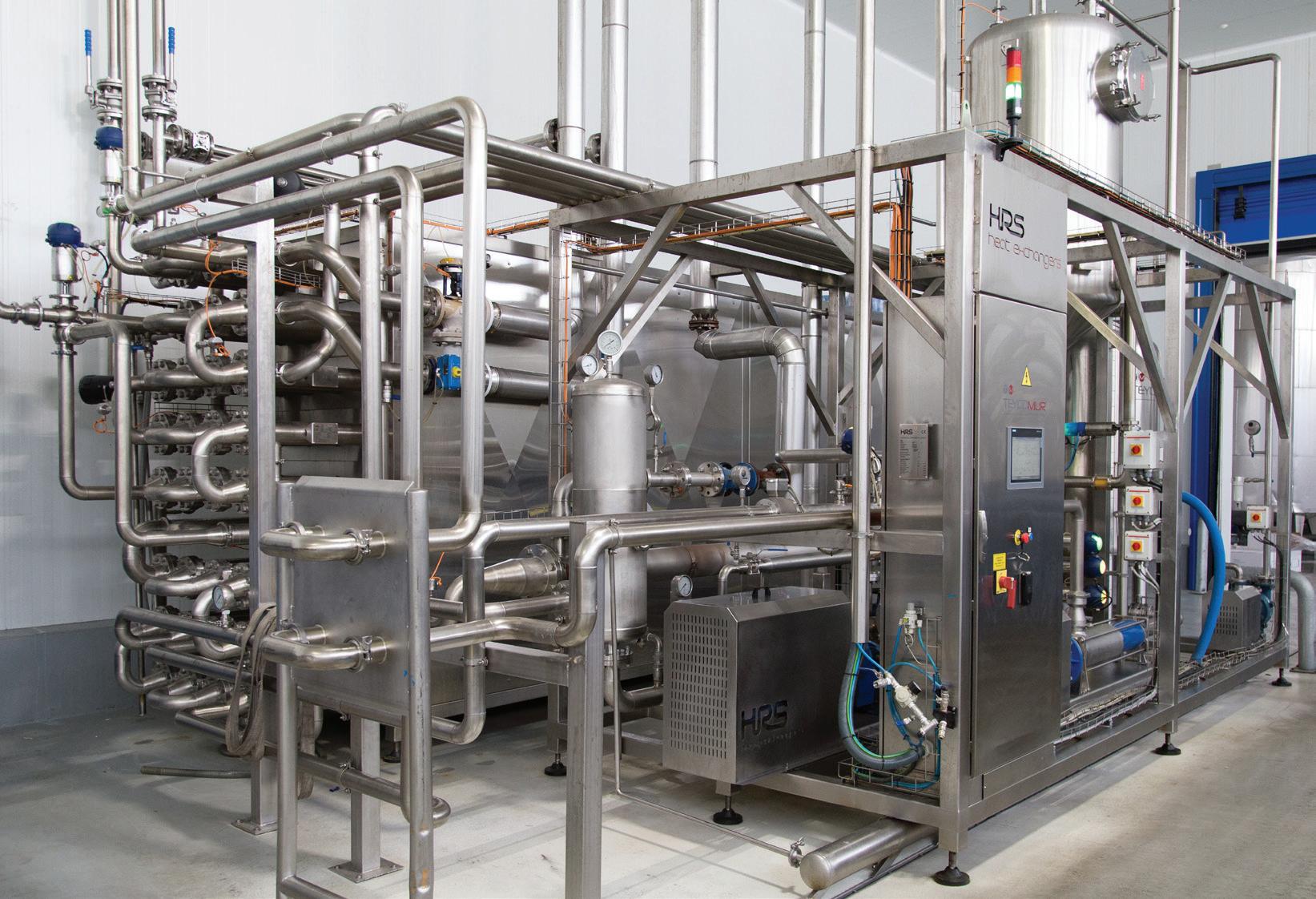

increased uncertainty caused by President Trump’s comments on import tariffs will only increase uncertainty. Florida citrus giant Alico Inc. recently announced it was getting out of the sector in favour of property development. “We determined that it’s not economically viable for us,” said CEO John Kiernan at the time.
Due to shortages of fruit and high prices, manufacturers are having to adapt, although this is easier for smaller and pioneering companies. For example, switching from orange to mandarin juice, or even moving into other beverages entirely.
For those major players, whose businesses are based around large volumes of orange juice, then maximising efficiency at every stage is no longer a ‘nice to do’, but essential. This includes minimising the amount of energy used to remelt, pasteurise or otherwise process their products.
The HRS I Series offers options to de-pack and crush then melt frozen fruit juice ready for storage or further processing. The IC Series features a roller conveyor which feeds individual drums into a tipper that empties them into the crusher. Here, a specially designed spiked roller crushes the solid ice into an icy slush, which is then transferred to the IM Series re-melting device.
Based on the corrugated tube heat exchanger technology for which HRS is renowned, the IM Series raises the
temperature of the juice from frozen to around 4°C in 90 seconds. As well as maintaining juice quality through rapid warming, thanks to the use of corrugated tube heat exchangers, the system is much more energy efficient than alternatives such as those using heating elements – saving both time and money during this key process step.
When it comes to energy-efficient pasteurisation, both the HRS MI and MR Series of pasteurisers are suitable for the rapid pasteurisation required for premium juice production. By using a corrugated tube design, the orange juice can be heated up to pasteurisation temperature much faster – typically by up to 30 percent. Because of the high heat transfer rates provided by the corrugated tube technique, HRS’s pasteurisation systems also use water at a lower temperature to reduce the risk of product damage. Another benefit of higher heat transfer rates is that the system footprint can be reduced by using shorter heat exchanger pipes. The shorter length of the heat exchanger also results in a reduction in pressure drop, which saves pumping power and further reduces energy costs by as much as 40 percent.
HRS also offers an ohmic pasteurisation system which uses electricity to heat the product rapidly and uniformly, has been scientifically shown to be highly effective while maintaining flavours and quality. This system heats the juice to 105°C within one second, where it is held at this temperature for four seconds and then cooled.


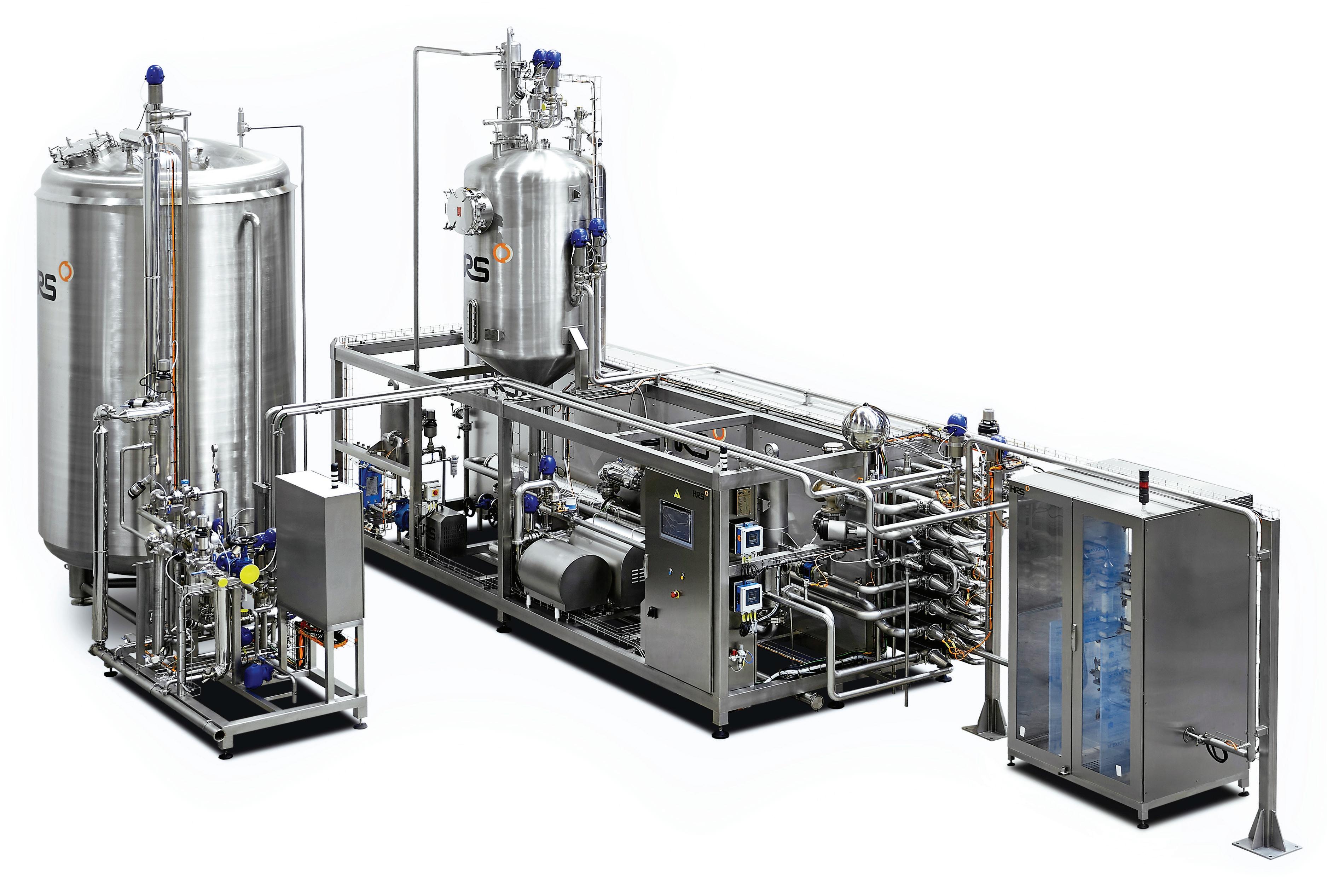
• https://worldcitrusorganisation.org/the-world-citrus-organisation-releases-itsfirst-production-forecast-for-the-northern-hemisphere/
• https://www.fas.usda.gov/sites/default/files/2025-02/citrus.pdf
• https://media.rabobank.com/m/790c11261be0badc/original/Global-OrangeJuice-Outlook-2024-25.pdf
• https://www.alternet.org/trump-tariff/



For years, food waste has been seen as part of the deal when running a hospitality business. But in an industry where margins are tight and customers are becoming more conscious of sustainability, that mindset is shifting.

IAIN LEES-GALLOWAY General Manager, Aotearoa Food Rescue Alliance
More and more operators are seeing food waste not as an inevitable cost, but as a genuine opportunity, and one that can cut expenses, improve customer satisfaction, and strengthen long-term resilience.
In fact, reducing food waste is one of the most profitable sustainability moves a hospitality business can make. Global research by Food Waste Champions 12.3 shows that for every $1 invested in food waste reduction, the average return is more than $7. That’s a strong case for action.
The scale of the problem is also hard to ignore. It’s commonly acknowledged that a third of the world’s food is wasted across

the supply chain. Here in New Zealand, hospitality contributes around 12 percent of our total food waste. That’s too much good food and too much money to be throwing away.
Start at the Plate
Cutting down food waste doesn’t mean cutting corners. In fact, it can improve both your service and your bottom line.
Let’s start with what’s on the plate. A study from the University of Otago found that 34 percent of food waste in hospitality comes from uneaten customer leftovers. That’s food you’ve paid for, prepped, cooked, and then had to throw away.
A quick review of portion sizes can reveal

some easy wins, especially for popular or frequently returned dishes. Offering smaller or flexible portions gives diners more control and can help reduce plate waste without sacrificing satisfaction.
Short-run specials are another great way to use ingredients nearing their expiry date. Daily checks of your fridge and pantry, along with clear labelling and FIFO (first in, first out) practices, can go a long way in reducing spoilage.
And don’t forget your team. When kitchen and front-of-house staff are trained to spot and reduce waste, they can make a big difference. Some venues are even getting customers involved, promoting takeaway options or celebrating “imperfect” produce as a menu feature, not a flaw.
Work Together: From Suppliers to Food Rescue
Reducing waste doesn’t stop at the kitchen door. Working with others across the supply chain is where real impact happens.
Start by having conversations with your suppliers. Many growers and wholesalers have gluts of seasonal produce or items that don’t meet cosmetic standards, but are still perfectly fresh and delicious, especially for soups, smoothies, sauces, or mashes, and they often come at a lower cost.
Partnering with food rescue organisations is another powerful step. Food rescue is all about collecting, sorting, and redistributing good surplus food to people who need it. Across the motu, the Aotearoa Food Rescue Alliance (AFRA) has 36 members, working with growers, manufacturers, supermarkets, and hospitality businesses to keep edible food out of landfill and into the hands of communities doing it tough.
These organisations can help with logistics, collecting your surplus for
you, and many can assist with data for sustainability reporting. The earlier you let them know about surplus or changing inventory, the faster they can respond, keeping more food in circulation.
What’s Next for Waste Reduction in Hospitality?
Momentum is building. Countries like France and the UK now have mandatory food waste reporting and reduction targets, and carbon accounting includes food waste emissions. New Zealand may not be far behind.
Consumers are pushing for change, too. AFRA research shows 83 percent of New Zealanders believe food businesses should do more to stop edible food from going to landfill.
Technology is helping. Apps like FoodPrint let businesses offer items near sell-by-date at a discount, saving food and recouping costs. AI-driven forecasting, dynamic pricing, and smarter inventory tools are becoming more accessible.
But at the heart of it all are the basics: know your stock, engage your team, and build strong supply chain relationships. Whether it’s adjusting portions, tightening systems, or working with food rescue, the opportunity is real, and the impact is too.
As we say at AFRA: let’s work together to feed people, not landfill.




Kiwis are disgusted by the amount of food going to waste in New Zealand and they want the government to take action, including funding food rescue.

According to a new survey from the Aotearoa Food Rescue Alliance, 73 percent of New Zealanders are concerned about edible food ending up in landfills, and 82 percent said they think it’s disgusting that one-third of food produced for people in New Zealand goes to waste.
When it comes to a solution, three-quarters of Kiwis (75 percent) agree the government should be doing more to prevent food that could feed people from ending up in landfill and 75 percent agree the government should contribute funding to food rescue.
The government currently provides around NZD 10 million annually to support food rescue and food banks, but that funding will end in June this year.
Aotearoa Food Rescue Alliance’s General Manager, Iain Lees-Galloway, said these results send a clear message ahead of Budget 2025.
“Food rescue services ensure surplus food, like bread left on the supermarket shelf at the end of the day, reaches people who need it and doesn’t end up in the bin. The public knows food rescue is essential,” said LeesGalloway.
“Without renewed investment from the government, millions of meals that nourish communities may end up being wasted. The evidence is clear: Kiwis want food to go to people, not landfill..
The survey found that 81 percent of respondents think surplus food should be used to feed people first rather than being diverted to other uses like animal feed or compost. Additionally, 83 percent believe that food businesses should do more to prevent food waste.
“Last year, our members distributed over NZD 73 million worth of surplus food into our communities, supplementing the NZD 120 million the government spends annually on food grants. But food rescue isn’t just about feeding people; it’s also about protecting the environment,” he added.
“When food ends up in landfill, it decomposes and produces methane, a green-

house gas 25 times more potent than carbon dioxide. Food rescue prevents thousands of tonnes of carbon emissions, aligning with New Zealand’s climate goals, addressing both social and environmental challenges. We’re calling on the government to step up in Budget 2025 and provide sustainable, longterm funding for food rescue.”
Survey findings at a glance (nationally representative sample of 1000 respondents):
• 73 percent of New Zealanders are concerned about edible food ending up in landfill.
• 75 percent agree the government should do more to stop food that could feed people from ending up in landfill.
• 75 percent agree the government should contribute to food rescue funding.
• 81 percent think surplus food should go to feeding people first, ahead of other uses like animal feed or compost.
• 82 percent think it’s disgusting that 1/3 of food produced in New Zealand for people goes to waste.
• 83 percent believe food businesses should be doing more to prevent food waste.





Every year, New Zealand households discard more than 100,000 tonnes of perfectly edible food—enough to feed the entire population of Dunedin or Northland for two years.

Beyond the environmental toll, this waste comes with a substantial price tag: the average New Zealand family throws away an estimated NZD 1,250 worth of food annually. It’s a staggering figure, but one that we can continue to address with the help of a powerful ally—technology.
From digital meal planners to AI-

powered kitchen assistants, a wave of tech innovation is emerging to help consumers reduce food waste at home. While the tools are new, the approach taps into timetested behavioural science that underpins some of the world’s most successful public campaigns—from Slip, Slop, Slap to Quitline and Beyond Blue.
“Reducing food waste is, at its core, about

habit change,” said Juno Scott-Kelly of Love Food Hate Waste NZ.
“We’re not just talking about better storage or meal planning—we’re talking about shifting key behaviours, and that’s where technology can be a game-changer.”
Working with WRAP (the Global Environmental Action NGO), Love Food Hate Waste NZ has drawn from behavioural models such as the COM-B system, which suggests that Capability, Opportunity, and Motivation are the key ingredients for changing behaviours. Digital tools are uniquely positioned to support all three.
In New Zealand, a suite of smart solutions is already helping Kiwis make food go further:
• Foodprint, a local app tackling food waste in hospitality, lets users snap up discounted kai from eateries with surplus stock. It’s a textbook example of


“nudging”—a concept made famous by behavioural economist Richard Thaler— where consumers are gently guided toward pro-social behaviours by making the sustainable choice the easy one.
• OLIO, a community-based food-sharing app, facilitates hyper-local exchanges of unwanted food. It’s a digital update on the old neighbourhood noticeboard, empowering citizens to share instead of discard. The app taps into social norms and the human desire for connection— two major drivers of behaviour change.
• Kitche, a UK import available to NZ users, allows households to log pantry items, track expiry dates, and generate recipes before food goes off. It subtly shifts routines around food use, promoting a more conscious, waste-free mindset. Think of it as a Fitbit for your fridge.
• Savey Meal-Bot, developed by PAK’nSAVE, is a clever chatbot that offers meal suggestions based on ingredients already in your kitchen. It removes the friction of decision-making—a known barrier to behaviour change—and helps people reframe ‘scraps’ as the starting point of a delicious meal.
• New World’s Meal Planner also brings behavioural insight to the supermarket aisle. By allowing users to customise meal plans by dietary preference, time constraints, and ingredients on hand, it’s tackling what behavioural scientists call the “intention-action gap”—the space between wanting to reduce waste and actually doing it.
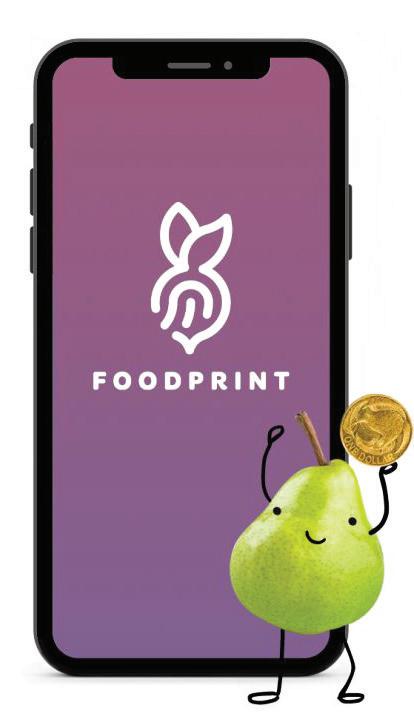
It’s important to note that technology alone won’t end food waste, but when paired with strong behavioural insights, it is proving to be a powerful accelerator. Globally, cities like Seoul, South Korea, have leveraged technology to slash residential food waste through weightbased pricing bins and smart composting systems. In Denmark, the app Too Good To Go has saved over 200 million meals from going to waste—demonstrating how
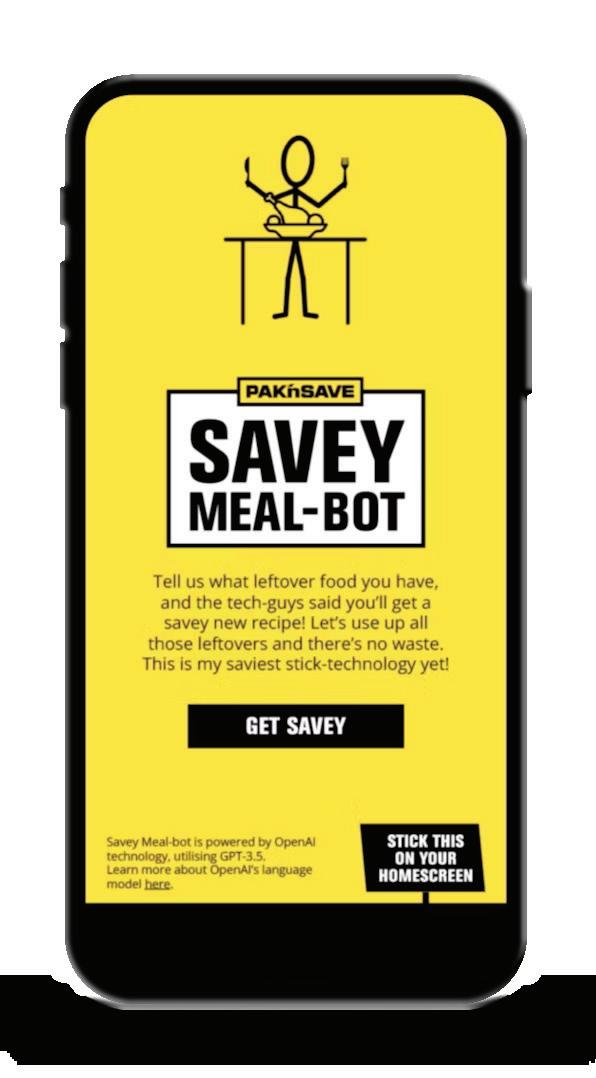
innovation can scale when it meets a clear consumer need.
As technology becomes more integrated into how we think, shop, plan, and cook our meals, the opportunity to reduce household food waste will continue to grow rapidly. The introduction of new food waste-fighting apps are not just ideas for the future—they are real, accessible tools that Kiwis can use right now to make food go further and waste less.
At Love Food Hate Waste NZ, we’re committed to leading the charge, using technology and collaboration to drive meaningful change in Kiwi households. Whether you’re a retailer, innovator, or just someone trying to make the most of your weekly shop, we invite you to join us in building a smarter, more sustainable food system—starting in your own kitchen.
The challenge for the future will be ensuring that these innovations are accessible, inclusive, and designed with the end user in mind. But the goal is clear: a future where wasting food is the exception, not the norm.
As New Zealand works toward a more circular food system, these emerging technologies and behaviour change strategies are pointing the way forward. And as Love Food Hate Waste NZ champions the cause, one message is resoundingly clear—big change starts with small actions. And sometimes, with just the tap of an app.




In March, Deborah Manning, founder of KiwiHarvest, was honoured as the Sustainability Leader of the Year at the 2025 Kiwibank New Zealander of the Year Awards—recognition that underscores the growing importance of food rescue in New Zealand’s sustainable future.

Food waste is not just a social issue; it’s also a major environmental threat. Globally, 30 percent of food produced ends up in landfills, amounting to a staggering 1.3 billion tonnes of wasted fruits, vegetables, meat, dairy, seafood, and grains. Once discarded, food decomposes anaerobically (without oxygen), releasing methane, a greenhouse gas far more potent than carbon dioxide. In fact, food waste contributes to over 8 percent of global carbon emissions—four times the emissions of the entire aviation industry.
Every
month,
the organization rescues
around 250,000 kilograms of high-quality food, preventing it from entering landfills while helping those struggling to put meals on the table.

KiwiHarvest is committed to tackling this crisis by rescuing and redistributing food to communities in need. Every month, the organization rescues around 250,000 kilograms of high-quality food, preventing it from entering landfills while helping those struggling to put meals on the table.
The impact of their work is undeniable. Since its founding in 2012, KiwiHarvest has:
• Rescued and delivered $100 million worth of food
• Prevented the release of over 40 million kilograms of CO₂-equivalent emissions
Despite these incredible milestones there is still much to be done. New Zealand wastes 103,000 tonnes of food annually within the supply chain (excluding household food waste), with 65 percent of it perfectly edible. Even with food rescue
efforts, an estimated 50,000 tonnes of quality food still goes uneaten each year.
While KiwiHarvest continues to increase its rescue efforts—more than doubling annual volumes since 2020—the need in communities remains dire. Government data reveals that one in four children (27 percent) live in households where food runs out often or sometimes. A recent survey by the NZ Food Network backs this up, they estimate over half a million Kiwis rely on food banks each month—the highest number on record.
New Zealand must prioritize food rescue as both a sustainability measure and a social imperative. By reducing waste, redistributing surplus food, and supporting initiatives like KiwiHarvest, we can build a future where good food is never wasted— and no Kiwi goes hungry.


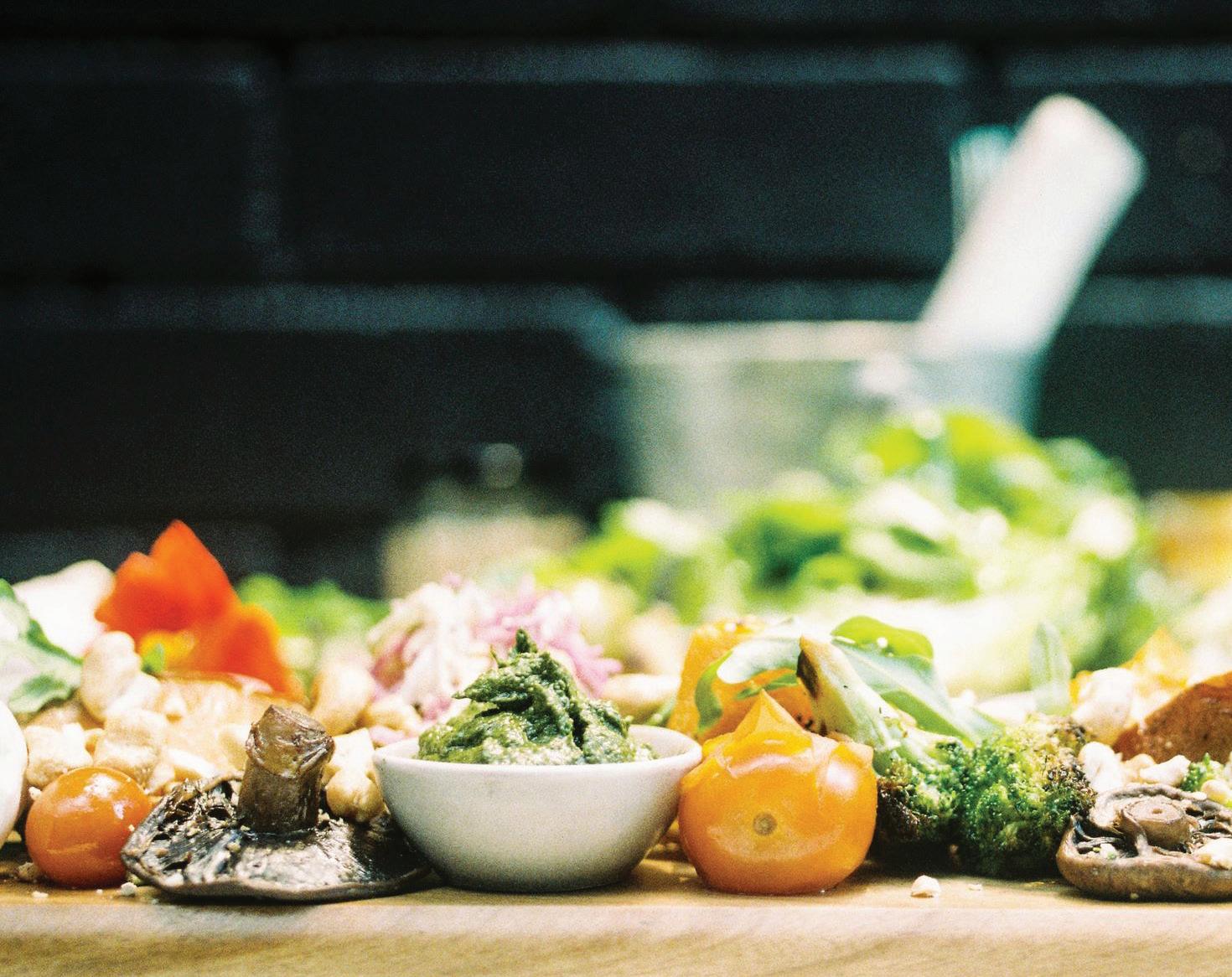
For many in the hospitality industry, food waste is an unavoidable by-product of doing business. But for Sarah Hughes, Sector Action Plan Project Coordinator at End Food Waste Australia, that mindset is not only outdated –it’s expensive.

SARAH HUGHES Sector Action Plan Project Coordinator, End Food Waste Australia
“Edible food makes up around 67 percent of waste from the hospitality sector in Australia,” said Hughes.
“When businesses throw that away, they’re not just losing the cost of ingredients –they’re wasting labour, overheads, disposal fees, and potential sales.”
Her message is clear: reducing food waste is good for the environment and good for business. The first step is understanding what goes into the bin.
Start with Measurement - Hughes recommends businesses begin by tracking their waste. It doesn’t need to be complex –a simple method of weighing or recording food waste at the end of each day for a week can help build a baseline. Where possible, she encourages operators to separate kitchen waste from plate waste to understand where losses are occurring.
“Even monitoring what’s being discarded
When businesses throw that away, they’re not just losing the cost of ingredients –they’re wasting labour, overheads, disposal fees, and potential sales.

can reduce waste by up to 30 percent. Once teams can see what they’re wasting, they can identify where change is needed.”
It’s not just about collecting data –communication is key. Hughes noted that staff may feel like they are being watched when asked to track waste, so they must understand the ‘why’. Involving the whole team, setting goals, and celebrating wins helps create a positive and proactive culture around waste reduction.
Front-of-house staff also have an essential role to play. As the customer touchpoint, they should be equipped to explain any menu changes or sustainable initiatives.
“Customers are increasingly supportive of businesses making sustainable choices,” said Hughes.
“And they appreciate being informed.”
To help businesses get started, End Food Waste Australia has developed two sector-
specific action plans:
• Catering Sector Action Plan
• Café Sector Action Plan
Technology can streamline managing food waste, especially in busy kitchens. Hughes points to a growing number of systems that assist with weighing and tracking waste, often with built-in analytics to highlight trends and hotspots.
“These tools can make life easier, but they require staff training to be effective,” she noted.
“It’s also worth investing in accurate forecasting systems and smarter inventory management to prevent waste before it happens.”
Hughes highlights smart menu design as a powerful way to reduce waste without compromising customer experience.
“Smaller, more flexible menus mean fewer ingredients to manage, which leads to less spoilage. Using different parts of the same ingredient across dishes is also a simple but effective strategy.”
She also suggests offering smaller portion sizes or optional sides, particularly as portion size is a major driver of plate waste.
“Standardising portions and listening to feedback about uneaten food can go a long way,” she said.
“But it must be paired with good customer communication to ensure the dining experience isn’t affected.”
Reducing food waste isn’t something hospitality businesses have to tackle alone. Working together across the supply chain, Hughes encourages building strong
relationships with suppliers and food rescue organisations.
“Letting your suppliers know you’re open to receiving short-dated stock or cosmetically damaged packaging can prevent perfectly good food from going to waste,” she explained.
Understanding what local charities can accept – and how collections can be managed – is also crucial. Sometimes, simply adjusting packaging sizes with suppliers can reduce unnecessary overordering.
“Bulk buying might seem economical, but if it leads to waste, it’s not saving money.”
Looking to the future, Hughes sees food waste reduction becoming embedded in everyday hospitality operations and hospitality training.
“There’s growing momentum for systemic change. Waste reduction needs to be built into menu design, food handling, and even workplace culture.”
Policy is also starting to play a role. In New South Wales, new FOGO (Food Organics, Garden Organics) mandates will soon require some food-producing businesses to separate food waste. While the policy doesn’t directly prevent waste, it often sparks behavioural change.
“For businesses already facing high operational demands, the idea of becoming more sustainable can feel overwhelming,” Hughes acknowledged.
“But small, simple changes often make the biggest difference. It’s about identifying the low-hanging fruit – those easy wins – and building from there.”




At South Kaipara Good Food (SKGF), we believe good food should never go to waste, especially when so many in our local community are going without, often multiple times a week. That’s why we’ve been working hard across multiple levels within the food sector to enable food rescue to nourish tummies and not go to landfills, creating CO2 emissions. After all, it’s in our tagline: “nourishing communities, cultivating change.”

GEMMA DONALDSON Chief Executive, South Kaipara Good Food
We’re not doing this alone— community collaboration is at the heart of our work.
Every rescued tray of eggs, every surplus crate of celery, and every shared meal is a win in the fight against food poverty.
For many in the food industry, waste is part of their daily happenings. But in our community, we’re flipping that narrative. At SKGF, we see food waste as an opportunity to use these relationships to reduce food poverty and create a meaningful impact.
In just six months, we’ve redirected over 40,000 kilograms of food (the equivalent of 18,000 meals) away from landfills and into the hands of those who need it most, and that’s just locally in South Kaipara. Thousands of women, men, and children are
fed through SKGF and the 30-plus partner organisations we work alongside, including schools, local community agencies, and other wider networks.
This isn’t just success measured in numbers. Locally, this success is measured in environmental impact, reduced home stress, more food in the kitchen cupboard, and a stronger, more connected, resilient community.
For local manufacturers and growers, whether it’s overordering stock, a cancelled export order, or portions that are simply too big for a consumer and create waste in the kitchen, each bit of wasted kai represents lost dollars, missed potential, and disregard for the mana of kai.
So, here is the question we pose to people

when they ask what they can do. What if surplus is reframed as saving?
When manufacturers and producers look at what is unused or, heaven forbid, undesired, businesses can start making smarter, more sustainable decisions – look at the Woolworth’s brand The Odd Bunch. My tamariki will eat a wonky carrot or a slightly smaller than average apple – they don’t know any better. Education around food is crucial and something that starts at home. Do you need four broccoli for NZD 3? Or will two of them go stinky in the bottom of your fridge? By buying seasonally, according to your shopping list and with the portions needed, we save time, money, and resources. We’ve seen it firsthand: small changes can deliver significant returns to your bank account.
No one can tackle food poverty alone. Best yet, we don’t have to. Our success relies on deep, intentional collaboration with producers, wholesalers, retailers, local government, and community organisations. Everyone has a role, from the grower with a bumper crop of capsicums to the bakery with end-of-day loaves, local boards and our government. As members of AFRA, we work alongside 35 pivotal and inspirational food rescue organisations, building relationships and advocating that not 1 kilogram of edible food should go to waste.
But unless they know we exist, how can you expect them to donate their excess stock

or even make intentional donations? Phone calls, emails and even face-to-face drop-ins are the backbone of relationships in our community.
Section 352 of the Food Act 2014 encourages businesses to donate food that would otherwise be wasted. There are rules, of course, but by working with those in the hospitality industry and manufacturers and ensuring best practice (MPI guidelines for food safety), hundreds of thousands of people can benefit from what some call food waste. Smoothies and banana cakes made from soft bananas or portions of lasagne were donated and handed to those recovering from their latest chemo round. These are the kinds of
things we deal with week in and week out. Many would love to see food rescue funded through MSD, MfE, MPI or MBIE. When food producers and manufacturers are legally obliged to partner with a local food rescue organisation because it forms part of social policy, they’re not just reducing waste in their factories or kitchens but investing in community wellbeing. When relationships are cultivated and nourished, and we work towards a shared purpose, everyone and everything benefits: people and environment. So, here is my hope and dream: Every company in the food sector partners with a local organisation to feed families, reduce waste, and ease the burden on nature.



In the protein market jungle, both established titans and adaptable newcomers are finding their paths to thrive.
By Jack Hem, Account Manager – Food at ACI Group

While global powerhouses bring scale and stability to the ecosystem, a new generation of agile food and drink brands proves that in today's marketplace, evolutionary advantage often belongs to those who can pivot the fastest.
The challenger’s advantage
What makes these challenger brands so effective? The answer lies not in their resources but in their mindset. As Eatbigfish founder Alan Morgan, who coined the term in 1999, noted, "Being a challenger brand is about having business ambitions that are bigger than your resources and being willing to do something bold to fill that gap".
At ACI Group, we've seen this continually play out in the food and drink market. While larger companies bring valuable expertise, research capabilities and market access, the most successful challenger brands in the protein space add something unique by challenging fundamental aspects of the category itself.
They're questioning how consumers experience protein products, the culture surrounding protein consumption, and even broader cultural norms about nutrition and sustainability. This is an approach that the large multinationals, typically slower to react due to many complex moving parts, just cannot match.
Today's protein market is increasingly values-driven, with consumers seeking out products that align with their ethical, environmental, and health priorities. While established brands invest significantly in sustainable initiatives and can leverage their scale for meaningful impact, smaller challengers dart nimbly through the market, often built from the ground up with these values at their core.
The rise in plant-based products high in protein is a great example, driven by the consumers' desire to be healthier, reduce environmental impact, and behave ethically towards animals. These motivations have sparked new product development across categories, from dairy alternatives and high-protein snacks to meat substitutes and functional beverages.
What's particularly impressive is how challenger brands have responded to these shifts with extraordinary speed. While larger food and drink corporations
might spend years honing and perfecting a formulation, and that’s certainly an advantage, these nimble newcomers can iterate rapidly, learning from the market in real time and adapting their offerings accordingly.
One intriguing aspect of today's protein landscape is the sophisticated understanding challenger brands have of consumer needs. They recognise that consumers aren't just looking for protein; they're seeking ‘protein plus’. This means adding specific benefits, such as digestibility, allergen-free formulations, and versatile application in familiar formats.
Those of us who remember the sparse plant-based protein market of the 1980s will attest that high-protein plant-based products historically struggled to meet stringent taste demands, particularly around texture and mouthfeel. It’s not until more recent years that this has turned around, and while a small segment of consumers might compromise taste for health benefits, most will not. Challenger brands have recognised this reality and focused intensely on solving these formulation challenges rather than expecting consumers to compromise.
At ACI Group, we've helped innovative challengers access premium protein ingredients, enabling them to stand out in a crowded and often noisy marketplace. Pea protein and soy protein are just two examples of how the right ingredient choices help brands outmanoeuvre larger competitors.
Pea protein has become a challenger brand favourite due to its non-allergenic profile and impressive versatility. The isolated pea protein we supply at ACI Group delivers 83 percent protein content, perfect for high-protein beverages, desserts, and baked goods. Pea protein's particularly valuable to challenger brands is its chameleon-like adaptability – from fine powders for smooth-blending drinks to crunchy nuggets with 70 percent protein content for snack bars.
Its sustainability credentials are equally impressive. Producing 100g of protein from peas emits just 0.4kg of CO2e, nearly 90 times less than equivalent beef protein. For brands differentiating themselves
through sustainability initiatives, pea protein is extremely attractive.
Meanwhile, challenger brands are also finding creative ways to use the more established soy protein. Our isolated soy protein at 90 percent purity offers exceptional functionality – whether enhancing protein bar recipes, creating instantly dispersible protein for beverages, or boosting the nutritional profile of baked goods and snacks.
Soy protein's ability to form a gel after heating positively impacts texture and shape, binds fat and water, improves sensory properties, extends shelf life, and regulates viscosity. Some of the most exciting challenger brands leverage these properties to solve formulation challenges that larger brands often address with complex ingredient combinations.
As established protein players see their market share eroded by the encroaching tide of exciting startup brands, the lesson is clear: size alone is no longer the competitive advantage it once was.
There’s a lot of opportunity ahead for brands that can rapidly respond to evolving consumer preferences, clearly communicate their values, and deliver innovative protein solutions across multiple applications.
By leveraging strategic ingredient combinations, these challenger brands are creating next-generation plant-based protein products that meet evolving consumer expectations for taste, nutrition and sustainability. Their focus on solving specific formulation challenges rather than pursuing one-size-fits-all solutions allows them to discover distinctive market positions.
At ACI Group, we're proud to support food and drink brands of all sizes, but we've been particularly impressed by the ingenuity and market responsiveness of today’s challenger brands. Their success isn't just disrupting the status quo; it's elevating the entire industry by pushing everyone to be more innovative.
As we look to the future of the protein marketplace, the most successful players won't necessarily be those with the largest global footprint but those most adept at adaptation. In today’s market, the nimble newcomers are teaching the established giants a fundamental lesson: It's not just the biggest and strongest brands that survive but those most responsive to change.


20 minutes with . . .



The blue economy has gained increasing attention as a sustainable way to balance economic growth with ocean health.
Jodie Kuntzsch, CEO of Moananui, a partner-led organisation dedicated to fostering the blue economy, explained the concept in simple terms.
“The blue economy aims to transition the maritime economy beyond business as usual and embrace the idea that economic growth and ocean health are entirely compatible, if not necessary for long-term sustainability. For us, improving ocean health is fundamental to achieving economic and social gains,” said Kuntzsch.
She also cited the Sustainable Seas National Science Challenge, which defined the blue economy as marine activities that generate economic value while delivering environmental, social, and cultural benefits.
Moananui’s long-term goal has been to ensure intergenerational well-being and prosperity through a flourishing blue economy. The organisation has also leveraged economic activity and infrastructure in the Nelson-Tasman region, the largest and fastest-growing blue economy in New Zealand.
“We bring together businesses and institutions across maritime sectors to help them grow their enterprises while creating economic and social value and improving ocean health.”
According to Kuntzsch, the Westpac report on the blue economy underscored its significant growth potential. However, she acknowledged that businesses need to adapt their models as the environment changes, not only through innovation but also by investing in sustainable outcomes.
“A ‘perfect’ blue economy may not exist, as every human activity has some level of impact, but by continuously evolving business models, investing in sustainability, and fostering collaboration, we can ensure economic growth and environmental stewardship go hand in hand.”
When asked how ocean health is defined and balanced with economic growth, Kuntzsch highlighted the importance of tailored solutions.



Continued from page 27.
“That’s a great question, and it’s unique to every circumstance, company, and activity in the marine environment.”
Working with global partners, we help innovators, scientists, and entrepreneurs collaborate on knowledge exchange, technology transfer, and large-scale problem-solving.
A crucial part of Moananui’s work has been problem-solving: optimising efficiency, improving performance, and actively enhancing marine ecosystems. She shared an example of its collaboration with international partners to tackle the practicalities of coastal resilience, which has been a challenge in New Zealand and the Port of San Diego.
“Working with global partners, we help innovators, scientists, and entrepreneurs collaborate on knowledge exchange, technology transfer, and large-scale problem-solving.”
Artificial intelligence and automation have become increasingly important in the blue economy, especially in ocean observation systems and health and safety. AI has also enhanced remote monitoring, allowing vessels to be managed from the shore, improving safety and minimising environmental risks.
“The more we can do to improve
visibility and understanding in the marine environment, the better we can operate, whether in transport, restoration projects like seagrass meadows, or predicting ocean changes.”
Kuntzsch also pointed to the upcoming Out of the Blue Summit, “Amplifying the Power of Data through Partnerships.” She said the theme was all about using data to create insights, optimise efficiency, and improve commercial performance.
One notable innovation has been Seaweave, an AI-assisted technology that has supported the creation of digital twins for aquaculture farms, particularly mussel farms. A collaboration between Moananui’s partner companies developed this technology, using AI to improve operational efficiencies and predictive capacities for aquaculture management.
Around the world, blue economies have developed differently.
“There are probably around 30 to 40 blue economy clusters worldwide, each reflecting the priorities and challenges of their regions. The key is bringing together
the right partners at the right time to tackle the most pressing challenges in each region.”
While New Zealand’s blue economy has focused on primary production, Iceland has prioritised maximising the utilisation of single species, such as cod, to prevent sustainability issues.
However, the opportunities in New Zealand’s blue economy are vast. With one of the largest Exclusive Economic Zones (EEZ) globally, the marine sector has remained underutilised, contributing less than three percent to GDP.
At the same time, transitioning into the blue economy came with challenges, particularly around securing capital. She said the blue economy is often a capitalintensive industry with long-term return horizons, making it difficult to attract investment.
The intangible nature of many aspects of the marine economy also added to the challenge of securing funding. This presented a huge potential for economic growth and productivity gains, not by
extracting more but by reimagining how value can be sustainably generated from the ocean. She said that the country’s rich marine biodiversity, which exceeded the European Union’s, had the potential for innovative biotechnology applications.
One example was Neo-Saxitoxin, a microalgae responsible for paralytic shellfish poisoning. In its purest form, it can be used as a non-addictive painkiller, providing an alternative to opioids.
Unlike other nations that must retrofit existing infrastructure, she said that New Zealand has the opportunity to develop its blue economy strategically from the outset. The key would be ensuring economic development aligned with cultural, ecological, and community values.
By balancing innovation, sustainability, and collaboration, Moananui has aimed to position the country as a leader in this space.
“Our role is to support businesses in leading this transition while ensuring that ocean health remains a top priority.”





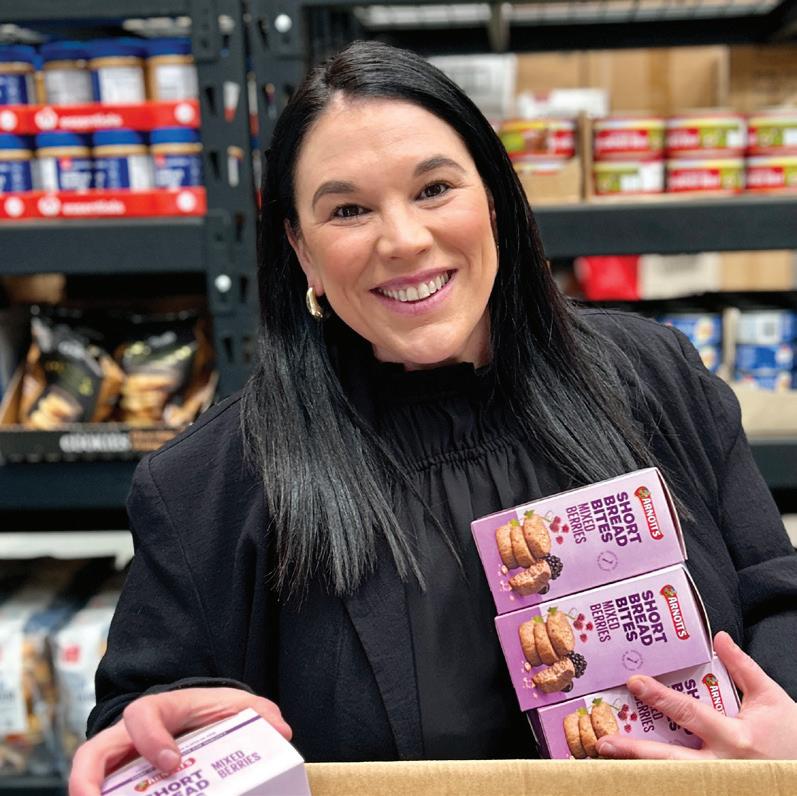
SARAH PAGE Founder & CEO Kindness Collective Foundation
The Kindness Collective was formed from acknowledging that not every Kiwi has the same experience living in New Zealand.
“The charity was born after a challenging time in my life when I was dealing with depression and a diagnosis. While searching for tools to overcome the difficulties, I found that not everyone’s ability to bounce back was the same,” said Sarah Page, founder and CEO of The Kindness Collective.
“I started a small community group, which became a nationwide charity, to give back and help myself heal. It was almost impossible to feel sad for your life when you were focusing on providing a better life for others.”
Eleven years later, knowing there’s still so much more to do has continued motivating Page.
At the same time, major highlights for her included providing Christmas for 20,109 children last year, winning New Zealand of
the Year Community of the Year in 2023, and finding a community of people who have found joy in giving back.
Page said she admired many incredible women in the charity, social sector, and business world daily, including Angela and Dame Theresa Gattung for turning their good fortune into support for others, Cecilia Robinson for building businesses that make positive changes in Kiwis’ lives, and Māhera Maihi, founder of Mā te Huruhuru, for changing lives with her social housing organisations, work-ready programmes, and advocacy in the housing insecurity space.
These women have built new, innovative charities and businesses with change at the forefront. Page advised others to listen to their guts, minds, and hearts regarding what they know to be true and be relentless in making it happen.
To her younger self, Page suggested having more balance.
“Founding, growing and managing a charity in the current social and economic climate is all-consuming; there will never be a day when we’re finished, so make sure to take time for yourself occasionally.”







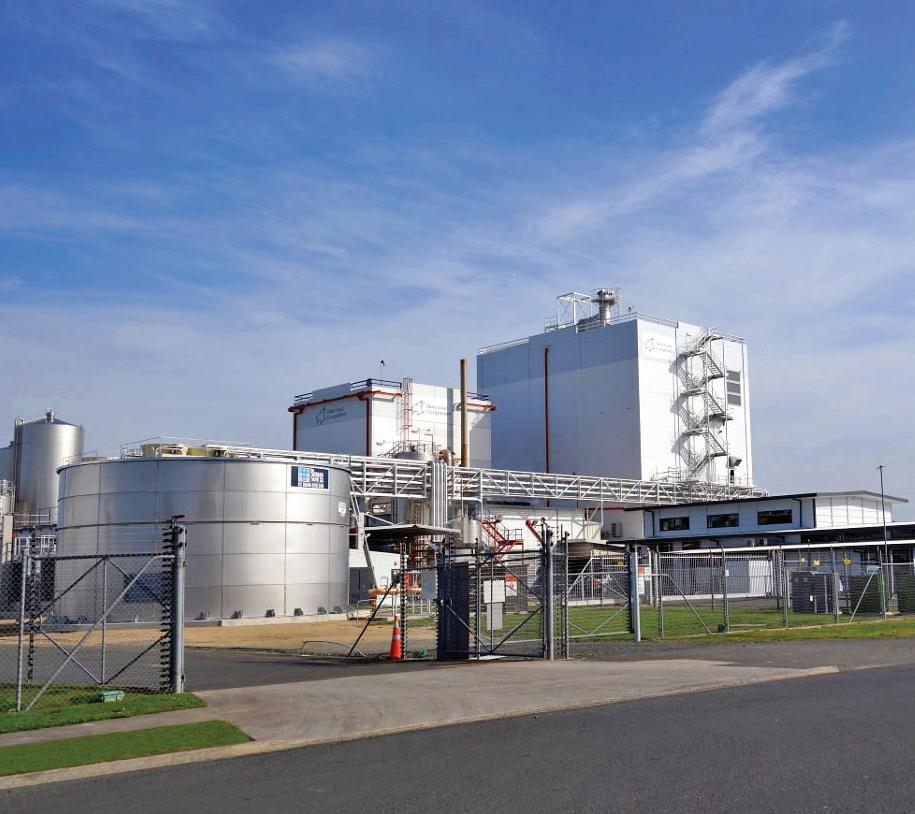

Chief Scientific Officer, Dairy Goat Co-operative
Dr. Elisabeth Weichselbaum had always been fascinated by the involvement of nutrition science in product development, ever since working with food industry players during her time as a nutrition scientist at the British Nutrition Foundation.

“Ifeel particularly connected to dairy as I grew up on a small dairy farm back home in Austria,” said Dr. Weichselbaum, whose career path was far from straight.
She wanted to become a teacher and study French, so she only took nutrition science as a second subject. However, she ended up doing a PhD in nutrition and coordinating a large EU-funded project at the same time.
This was a great experience as she had the opportunity to liaise with experts from
I
feel passionate about using science to enable commercial success and help create products that benefit consumers. That passion motivates me daily, as does the desire to work with inspirational people I can continue to learn from.

across Europe. She also became one of the editors of the first European Nutrition and Health Report.
After a few years in academia and a small centre for public health in Vienna, Dr. Weichselbaum moved to London and worked as a nutrition scientist at the British Nutrition Foundation for five years.
Moving to New Zealand in 2013 was an excellent opportunity for a career change. After a short stint as a freelance consultant, she was lucky to land a role as a senior research scientist at Fonterra and has worked in the dairy industry ever since.
At Fonterra, Dr. Weichselbaum worked closely with the product development and marketing teams on new products and led various science and research activities. She then joined Synlait and, in November last year, became the Dairy Goat Co-operative’s chief scientific officer.
“The experience I gained in the various roles across academia, public health and the dairy industry over the years is invaluable for that role. My current role is a real highlight as I can use my combined experiences in a great company over the
years in a proper leadership role,” said Dr. Weichselbaum.
“I feel passionate about using science to enable commercial success and help create products that benefit consumers. That passion motivates me daily, as does the desire to work with inspirational people I can continue to learn from.”
Throughout her career, Dr. Weichselbaum has worked with various inspirational people, all of whom have helped her grow. She said the key was to be curious, learn from people in her immediate work area, and connect with as many people from different backgrounds as possible, as it provided a much broader understanding of how the industry works.
She also recommended that others in the field grab opportunities as they come.
“I once read that people are often more successful when they don’t have a fixed career path they pursue, but when they remain more flexible and take opportunities as they come; that approach certainly has worked for me. I wouldn’t have gotten here had I not kept an open mind and grabbed interesting opportunities.”




SU McCLUSKEY Special Representative for Australian Agriculture
Su McCluskey found she could effectively combine theory with practice during her earlier career in tax and policy and has applied those skills to various diverse roles.
McCluskey worked on the GST for government when it was first introduced in Australia. Since she was living on a farm at the time, she developed expertise in primary production taxation, which led to her advocacy work, first for the National Farmers’ Federation and then for the Business Council of Australia.
As an advocate for reducing the compliance burden on businesses, McCluskey was asked to return to the government to work on regulation reform. She then returned to the private sector to run the Council of Rural Research and Development Corporations and serve as CEO of the Regional Australia Institute, a policy think tank for regional Australia.
At the same time, McCluskey was also very fortunate to be asked to participate in several independent policy reviews, including those on competition policy, innovation and research, governance, telecommunications, and digital transformation. All of these extended the lenses through which she viewed different issues and honed her ability to be strategic and outcomes-focused.
A decade ago, McCluskey retired from full-time executive roles and became a non-executive director in agriculture, health, wealth and wellbeing, young
The ongoing challenges of climate and conflict just mean that there is a need to constantly look for different solutions to respond to the rapidly changing environment, and this is what I find exciting.
people, and renewable energy.
She took up the role of Special Representative for Australian Agriculture over three years ago, a unique role as an industry representative in domestic and global markets that provides a bridge between government and industry.
McCluskey said she loved advocating for Australian agriculture in global markets, sharing what the country had been doing regarding sustainability, trade and market access, and agritech, and learning what other markets and economies were doing
to better inform policies and practices back home.
“The ongoing challenges of climate and conflict just mean that there is a need to constantly look for different solutions to respond to the rapidly changing environment, and this is what I find exciting.”
Her advice to others was to have the selfconfidence to succeed and do a good job.
“You don’t have to have all the knowledge and skills, but an ability to learn quickly. Too often, we don’t put our
hand up because we think about why we can’t do a role instead of why we can. No matter how good you think you are at something, there is always more you can learn, a different way of doing things, or a different way of articulating something,” added McCluskey.
“By listening to others, you will better understand what they are looking for, wanting, or needing, and you can respond accordingly. That classic adage that you have two ears and one mouth for a reason, so use them in that proportion applies.”



